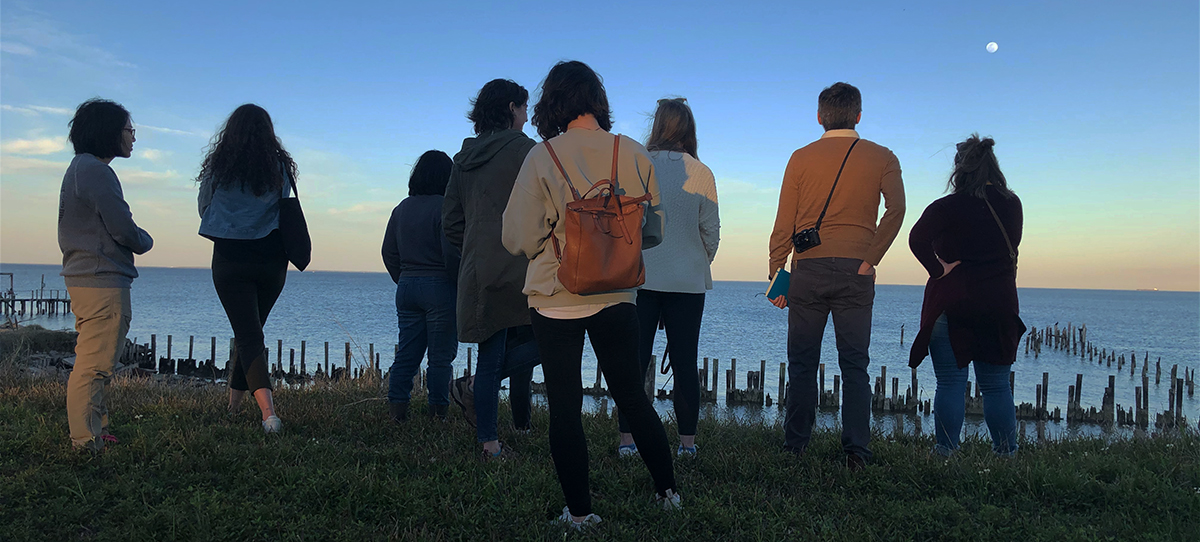
BRIDGE
Spring 2020 | Houston Audubon Society | High Island TX
Project Team: Wellington Chew, Bernadette Cole, Hannah George, Christie Johnson, Laura Marley Lancaster, Kate Leyendecker, Abby Lopez, Makayla Rutt, Lan (Joanne) Zhou & Brandt Hanson (generous donator of his time)
Our COOP work is on hold because of the COVID-19 virus. Once the opportunity arises we’ll return to complete it.
DesignLab is working again this semester with Houston Audubon at their Coastal Operations site (COOP) on High Island. Continuing last semester’s work when students designed and built an outdoor living room and fire pit (See COOP under project list), this semester’s students are adding a footbridge and walkway that connects the living room with the a Recreational Vehicle (RV) area. These RV’s belong to volunteers who stay at the refuge for extended periods to assist with maintenance needs, help with environmental education and promote stewardship to the thousands of visitors who frequent the island each year. The small bridge being designed and built crosses a swale that rapidly fills during the island’s rains. The footbridge path passes under a heritage live oak sitting between the RV area and screened porch. In addition to the footbridge, students are designing and building tables and chairs for ten guest who use the outdoor living room.
The DesignLab is also studying equity issues for the proposed Galveston Bay Park which when built will rise twenty-five feet above the bay and act as a seawall to help prevent storm surge should a major hurricane hit the area. The new twelve-mile island largely protects the petro-chemical industry (which accounts for 42% of the nation’s petrochemical production) along the Galveston Bay edge and Houston Ship Channel. Students are working with the Galena Park and Manchester neighborhoods which back up to the Port of Houston petrochemical facilities along the Ship Channel. Those two underserved neighborhoods, mostly Hispanic residents, have a long history of high cancer rates and a larger-than-average number of children with severe asthma. Property values in these neighborhoods are low because of what the chemical plants release in their production process, not to mention spills that occur on a frequent basis. Currently plans for the park do not address these unhealthy conditions and other inequities while they protect these industries. Students are using The Green New Deal recently adopted by the House of Representatives as a broad framework from which to consider the needs of the Galena Park and Manchester residents. Much of what The Green New Deal sets out to remedy aligns with the needs of the Houston neighborhoods under consideration. The study will result in a new body of information and accompanying design considerations.